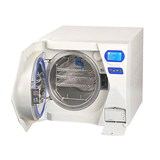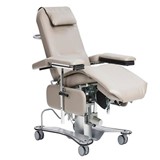Looking for scar removal machines in Australia? Get expert buying tips, price ranges, and maintenance advice to choose the best equipment for your needs.
Key takeaways
- Price range: Scar removal machines in Australia typically cost between $10,000 and $55,000+, depending on type and technology.
- Types of machines: Popular options include laser-based, radiofrequency, and microneedling devices — each suited to different scar types.
- Maintenance: Annual servicing costs average 5-10% of the machine’s purchase price, with consumables like replacement tips or laser modules factored separately.
- Financing: Many suppliers offer leasing or finance options with terms from 12 to 60 months, often requiring a 10-20% deposit.
- Warranties: Standard warranties range from 1 to 3 years; extended service contracts are advisable for costly machines.
- Compliance: Devices must comply with the Therapeutic Goods Administration (TGA) regulations and hold appropriate Australian certifications.
- Market growth: The Australian aesthetic device market is growing at approximately 7% annually, increasing demand for effective scar treatment solutions.
Introduction
Investing in a scar removal machine is a significant decision for clinics, dermatologists, and cosmetic practitioners in Australia. With evolving technologies and rising patient demand for minimally invasive treatments, understanding the market, technology, costs, and regulatory landscape is essential before making a purchase. This comprehensive guide helps you navigate the complexities of choosing the right scar removal machine tailored to your clinical needs and budget.
Types of Scar Removal Machines
Understanding the different types of scar removal technologies available will help you select the most suitable machine for your practice:
1. Laser Scar Removal Machines
- Use focused light to resurface skin and stimulate collagen.
- Suitable for acne scars, surgical scars, and stretch marks.
- Popular technologies: Fractional CO2, Erbium:YAG, and pulsed dye lasers.
- Average price: $25,000 - 45,000.
- Pros: Precise, minimal downtime.
- Cons: Higher upfront cost, requires trained operators.
2. Radiofrequency (RF) Scar Removal Machines
- Use radiofrequency waves to heat deeper skin layers, promoting collagen production.
- Suitable for moderate scars and skin tightening.
- Average price: $15,000 - 30,000.
- Pros: Non-invasive, less discomfort.
- Cons: Multiple sessions may be required.
3. Microneedling Devices with RF
- Combine micro-injuries with RF energy for enhanced skin rejuvenation.
- Used for mild to moderate scars.
- Average price: $10,000 - 25,000.
- Pros: Versatile, shorter recovery.
- Cons: Limited to less severe scars.
Pricing Overview
- Laser scar removal machines generally range from $25,000 to $45,000. Additional costs typically include consumables, operator training, and ongoing maintenance to keep the device operating at peak performance.
- Radiofrequency (RF) devices are usually priced between $15,000 and $30,000. Buyers should budget for replacement tips and periodic calibration to ensure accurate energy delivery and treatment consistency.
- Microneedling machines combined with RF technology are the most affordable option, costing between $10,000 and $25,000. Additional expenses commonly involve disposable cartridges and other consumable items that require regular replacement.
Additional Costs
- Training costs: Certified operator training may cost $1,000 - 3,000.
- Installation and setup: Usually included, but budget for site preparation if needed.
- Consumables: Replaceable parts and tips can cost between $500 and $2,000 annually depending on usage.
How Scar Removal Machines Operate
- Most devices use controlled skin injury to stimulate natural healing.
- Sessions typically last 20 to 60 minutes depending on the treatment area.
- Treatment plans range from 3 to 6 sessions spaced 4-6 weeks apart.
- Machines come with adjustable energy settings for personalised treatments.
Maintenance and Parts
- Routine maintenance includes cleaning, calibration, and software updates.
- Consumables (e.g., laser handpieces, RF tips) must be replaced regularly.
- Annual maintenance contracts generally cost 5-10% of the purchase price.
- Availability of spare parts in Australia can vary; confirm local supplier support before purchase.
Financing Options
- Leasing: Spreads cost over 12-60 months, improving cash flow.
- Equipment loans: Common with interest rates around 7-10% p.a. for medical devices.
- Some suppliers offer rent-to-own or finance packages tailored to small clinics.
- A deposit of 10-20% is often required upfront.
- Consider tax benefits under Australian instant asset write-off schemes for eligible purchases.
To explore flexible, fast, and competitive financing tailored for equipment like scar removal machines, check out Easy Asset Finance. Their expert team can help you secure the best terms to preserve your cash flow and grow your business.
Warranties and Aftermarket Service
- Standard warranties range from 12 to 36 months.
- Extended warranties and service contracts can protect against costly repairs.
- Ask about:
- Warranty exclusions (e.g., consumables, user damage).
- Service response times.
- Whether onsite repairs are available.
- Always clarify if software updates are included in warranty coverage.
Compliance and Certification Considerations
- Scar removal devices must be registered with the Therapeutic Goods Administration (TGA).
- Check that the device holds a TGA ARTG (Australian Register of Therapeutic Goods) listing.
- Ensure compliance with Australian radiation safety standards for laser devices.
- Operators must be trained and accredited as per local regulations.
- Non-compliant devices can risk clinic reputation and incur legal penalties.
- Regular audits may be required depending on state laws.
Treatment effectiveness and technology comparison
When choosing a scar removal machine, it’s important to understand how different technologies perform on various scar types and skin tones. Laser scar removal machines, like fractional CO2 lasers, are highly effective for deep acne and surgical scars. Many patients see noticeable improvement after just 3-5 treatments with minimal downtime. A 2023 study from the Australasian Journal of Dermatology found over 75% of patients reported significant results within three months of fractional laser therapy.
On the other hand, radiofrequency (RF) devices offer a gentler treatment option suited for mild scarring and skin tightening, especially for darker skin types. RF machines typically require 4-6 sessions for best results, with only mild redness afterwards. The combination of microneedling with RF is gaining popularity as a cost-effective way to stimulate collagen and improve less severe scars.
Understanding these technology differences will help you choose a machine that aligns with your client needs for effective, safe treatments.
TGA approval and medical device classifications
Compliance with Australian medical regulations is crucial when purchasing a scar removal machine. The Therapeutic Goods Administration (TGA) regulates medical device approvals to ensure safety and efficacy.
Always check that your machine is listed on the Australian Register of Therapeutic Goods (ARTG) — this confirms it meets stringent local standards. Scar removal devices typically fall under Class IIa or IIb medical devices, which require proof of risk management and clinical evidence.
Using a device without TGA approval can expose your business to legal and safety risks. Before buying, request the supplier’s TGA certificate and verify the device’s ARTG number on the official TGA website.
Clinic fit-out and power requirements
Installing a scar removal machine involves more than just the purchase price. Consider your clinic’s physical space — most laser devices require a dedicated treatment room with controlled lighting and ventilation to protect patients and operators.
Electrical requirements can also impact your budget. Advanced lasers often need three-phase power, which may require costly upgrades. In contrast, RF and microneedling machines generally run on standard single-phase power.
Planning for these requirements early will help you avoid unexpected expenses and ensure a smooth installation with minimal downtime.
Training and certification options in Australia
Proper training is essential to safely operate scar removal machines and deliver great results. In Australia, accredited courses such as RIICBS307 - Conduct Laser Safety Awareness Training and the SHB50121 Diploma of Beauty Therapy with laser therapy electives are common choices.
Training usually lasts 1 to 3 days and costs between $800 and $2,500 depending on the provider and course depth. Top institutions include the Australasian College of Laser Therapy and the Australian Aesthetic & Cosmetic Dermatology School (AACDS).
Investing in quality training ensures compliance with regulations, builds client trust, and improves treatment outcomes.
Frequently Asked Questions About Scar Removal Machines
1. How long before I see results after treatment?
Initial improvements are typically visible within 2–4 weeks, with optimal outcomes after 3 to 6 sessions spaced several weeks apart. This depends on the machine used, the type of scars treated, and patient skin response.
2. Are scar removal machines safe for all skin types?
Most modern devices can be calibrated for various Fitzpatrick skin types, including darker tones. However, those with higher melanin levels should use specialised laser settings or alternative modalities to minimise risks of pigmentation changes. Always verify TGA approval and request manufacturer training.
3. What ongoing costs should I budget for?
Expect recurring expenses such as:
- Consumables (e.g. laser tips, microneedling cartridges)
- Maintenance and calibration
- Software updates and licence renewals
- Operator training refreshers or certification renewals
4. Can scar removal machines treat other skin concerns?
Yes. Many models are multifunctional and also offer treatments for:
- Fine lines and wrinkles
- Pigmentation and melasma
- Skin tightening and rejuvenation
This versatility can improve ROI for clinics and boost patient retention.
5. How do I choose the right machine for my clinic?
Start by evaluating:
- Your clinic’s service focus and common patient concerns
- Types of scars treated (acne, keloids, post-surgical)
- Available budget (initial and ongoing costs)
- Training and support provided by the suppliers
Booking product demonstrations and comparing warranty and compliance options are crucial steps in making an informed purchase.
Conclusion
Buying a scar removal machine in Australia demands careful consideration of technology type, price, compliance, and ongoing costs. With the market growing steadily and patient demand rising, selecting the right device will not only enhance your clinic’s capabilities but also provide strong ROI. Always ensure TGA compliance and robust supplier support to protect your investment and deliver safe, effective treatments.
If you want assistance comparing models or identifying trusted Australian suppliers, feel free to ask for tailored advice.














